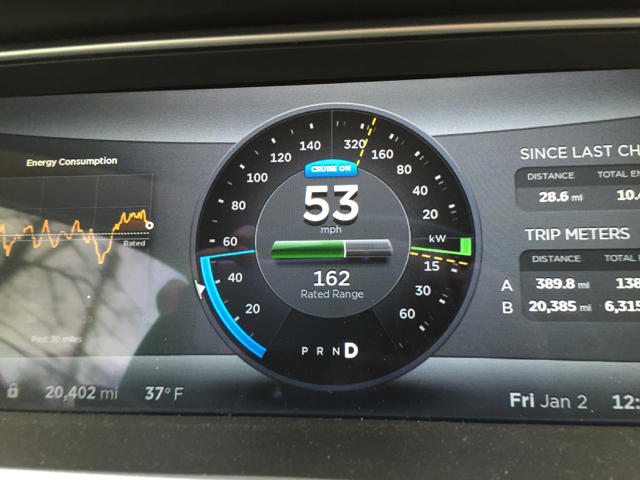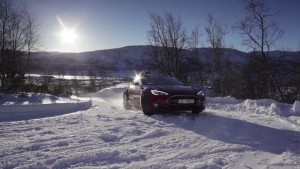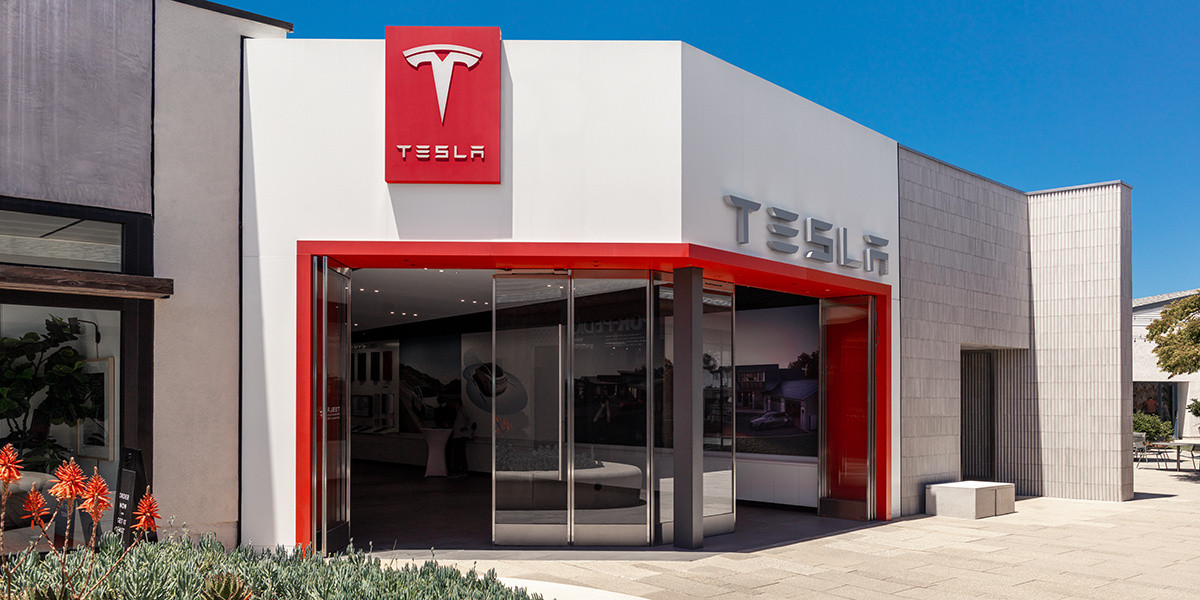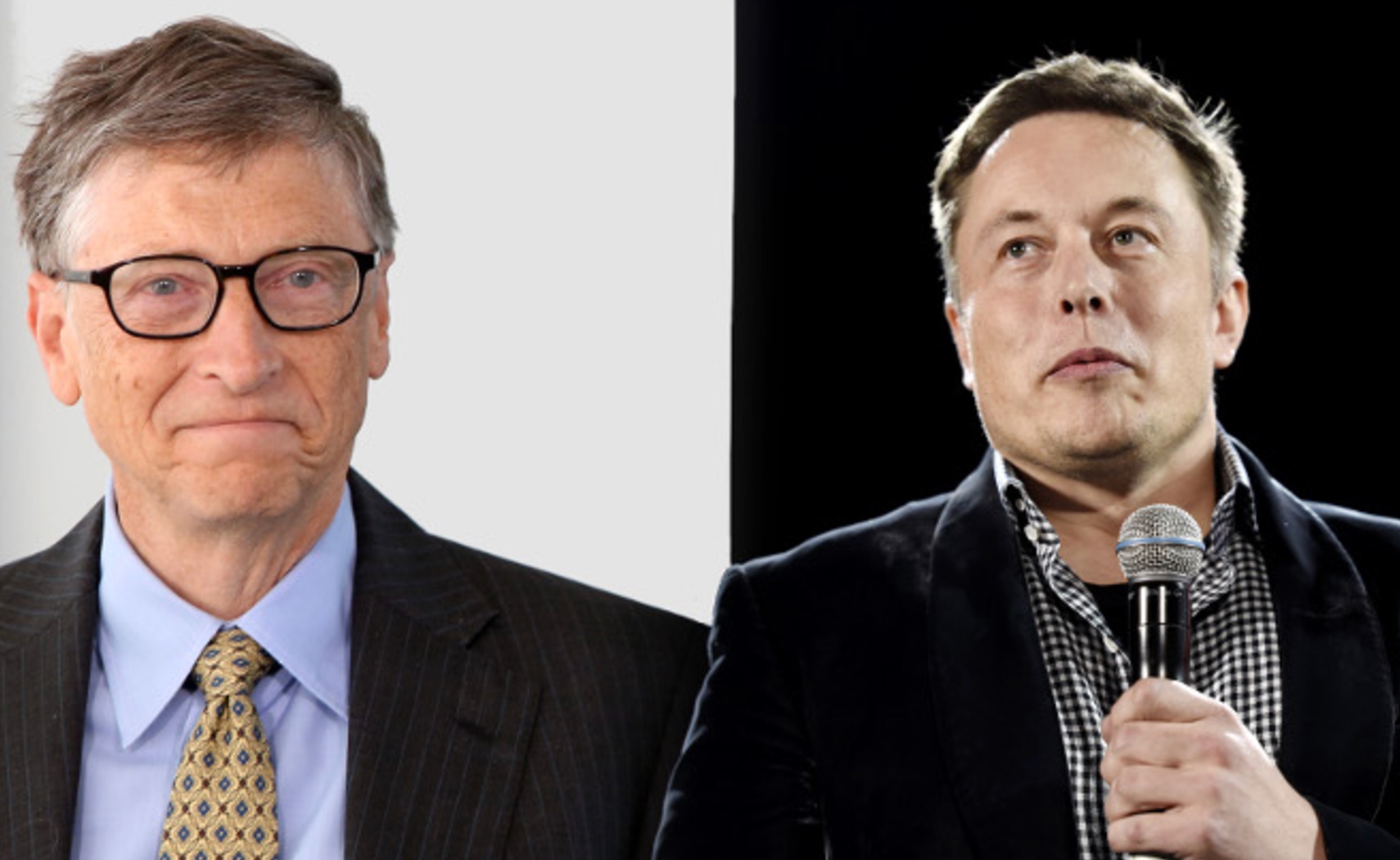News
Winter Quirks with Tesla’s Cruise Control System

I use cruise control a lot when driving. Highways, back roads, you name it. My main motive for using cruise control as much as I do is to avoid the urge to speed. After all, it’s far too easy to speed in the Model S with its smooth instant acceleration and lack of engine noise.
I did a fairly detailed review of the Model cruise control system back in the spring of 2014 but it turns out there’s more to the story than I originally thought. The frigid New England temperatures have affected battery range and the ability to use regenerative braking but little did I know that it would also affect the cruise control system.
Model S Cruise Control and Cold Weather
Cruise control is designed to maintain a constant speed without having to use the accelerator pedal. On level terrain it’s pretty reliable in terms of keeping a constant speed, but results begin to vary when going downhill with cruise control on.
In most ICE cars, cruise control will not apply the brakes but will leave the car in gear allowing the vacuum of the engine and engine braking to slow the car down. Some cars will also downshift to further increase engine braking as a means of slowing the vehicle.
The Model S on the other hand has no engine or transmission that can be used for engine braking. Because of this the Model S cruise control system relies strictly on the effects of regenerative braking to slow the car down. When regenerative braking is limited, the rate in which the vehicle decelerates is also limited which in turn limits the ability for the vehicle to automatically slow down.

Tesla Model S cruise control ineffective when regenerative braking is limited due to cold weather conditions.
In the image above, I had cruise control set at 40MPH but because of the limited regenerative braking due to cold weather combined with a down hill decent, the Model S ended up plowing right past the 40 MPH mark as gravity took hold of the car. I ended up speeding 13 MPH over the cruise control speed.
Model S owners get to choose between standard and low regenerative braking but it doesn’t make that much of a difference during cold weather conditions since regen as a whole will be limited.
There is Tesla Life Outside of California
Some California Tesla friends were surprised that I was concerned about this winter quirk. Their thought was that the Model S would operate normally after a short warm up period and this issue shouldn’t be considered a big deal. They suggested I accelerate hard a few times to get the vehicle back to “normal” temperatures but that’s easier said than done when you’re dealing with winter road conditions.

Warming 7,000 battery cells up to optimal operating temperatures takes time. Here in New England with temperatures well below the 40’s, it often takes 45 minutes of highway driving before regen kicks back in and can accept over 30kW. But more often than not I’m driving without regenerative braking because of the cold weather.
30kW of regenerative braking is needed for slowing the car down. Anything less and the car begins to gain speed as it begins to roll downhill. How fast it gains speed really depends on how limited the regen is.
If you live in colder climates and use cruise control on your Model S, beware of this winter quirk or run the risk of picking up a hefty speeding ticket.

News
Tesla dispels reports of ‘sales suspension’ in California
“This was a “consumer protection” order about the use of the term “Autopilot” in a case where not one single customer came forward to say there’s a problem.
Sales in California will continue uninterrupted.”

Tesla has dispelled reports that it is facing a thirty-day sales suspension in California after the state’s Department of Motor Vehicles (DMV) issued a penalty to the company after a judge ruled it “misled consumers about its driver-assistance technology.”
On Tuesday, Bloomberg reported that the California DMV was planning to adopt the penalty but decided to put it on ice for ninety days, giving Tesla an opportunity to “come into compliance.”
Tesla enters interesting situation with Full Self-Driving in California
Tesla responded to the report on Tuesday evening, after it came out, stating that this was a “consumer protection” order that was brought up over its use of the term “Autopilot.”
The company said “not one single customer came forward to say there’s a problem,” yet a judge and the DMV determined it was, so they want to apply the penalty if Tesla doesn’t oblige.
However, Tesla said that its sales operations in California “will continue uninterrupted.”
It confirmed this in an X post on Tuesday night:
This was a “consumer protection” order about the use of the term “Autopilot” in a case where not one single customer came forward to say there’s a problem.
Sales in California will continue uninterrupted.
— Tesla North America (@tesla_na) December 17, 2025
The report and the decision by the DMV and Judge involved sparked outrage from the Tesla community, who stated that it should do its best to get out of California.
One X post said California “didn’t deserve” what Tesla had done for it in terms of employment, engineering, and innovation.
Tesla has used Autopilot and Full Self-Driving for years, but it did add the term “(Supervised)” to the end of the FSD suite earlier this year, potentially aiming to protect itself from instances like this one.
This is the first primary dispute over the terminology of Full Self-Driving, but it has undergone some scrutiny at the federal level, as some government officials have claimed the suite has “deceptive” naming. Previous Transportation Secretary Pete Buttigieg was vocally critical of the use of the name “Full Self-Driving,” as well as “Autopilot.”
News
New EV tax credit rule could impact many EV buyers
We confirmed with a Tesla Sales Advisor that any current orders that have the $7,500 tax credit applied to them must be completed by December 31, meaning delivery must take place by that date. However, it is unclear at this point whether someone could still claim the credit when filing their tax returns for 2025 as long as the order reflects an order date before September 30.

Tesla owners could be impacted by a new EV tax credit rule, which seems to be a new hoop to jump through for those who benefited from the “extension,” which allowed orderers to take delivery after the loss of the $7,500 discount.
After the Trump Administration initiated the phase-out of the $7,500 EV tax credit, many were happy to see the rules had been changed slightly, as deliveries could occur after the September 30 cutoff as long as orders were placed before the end of that month.
However, there appears to be a new threshold that EV buyers will have to go through, and it will impact their ability to get the credit, at least at the Point of Sale, for now.
Delivery must be completed by the end of the year, and buyers must take possession of the car by December 31, 2025, or they will lose the tax credit. The U.S. government will be closing the tax credit portal, which allows people to claim the credit at the Point of Sale.
🚨UPDATE: $7,500 Tax Credit Portal “Closes By End of Year”.
This is bad news for pending Tesla buyers (MYP) looking to lock in the $7,500 Tax Credit.
“it looks like the portal closes by end of the year so there be no way for us to guarantee the funds however, we will try our… pic.twitter.com/LnWiaXL30k
— DennisCW | wen my L (@DennisCW_) December 15, 2025
We confirmed with a Tesla Sales Advisor that any current orders that have the $7,500 tax credit applied to them must be completed by December 31, meaning delivery must take place by that date.
However, it is unclear at this point whether someone could still claim the credit when filing their tax returns for 2025 as long as the order reflects an order date before September 30.
If not, the order can still go through, but the buyer will not be able to claim the tax credit, meaning they will pay full price for the vehicle.
This puts some buyers in a strange limbo, especially if they placed an order for the Model Y Performance. Some deliveries have already taken place, and some are scheduled before the end of the month, but many others are not expecting deliveries until January.
Elon Musk
Elon Musk takes latest barb at Bill Gates over Tesla short position
Bill Gates placed a massive short bet against Tesla of ~1% of our total shares, which might have cost him over $10B by now

Elon Musk took his latest barb at former Microsoft CEO Bill Gates over his short position against the company, which the two have had some tensions over for a number of years.
Gates admitted to Musk several years ago through a text message that he still held a short position against his sustainable car and energy company. Ironically, Gates had contacted Musk to explore philanthropic opportunities.
Elon Musk explains Bill Gates beef: He ‘placed a massive bet on Tesla dying’
Musk said he could not take the request seriously, especially as Gates was hoping to make money on the downfall of the one company taking EVs seriously.
The Tesla frontman has continued to take shots at Gates over the years from time to time, but the latest comment came as Musk’s net worth swelled to over $600 billion. He became the first person ever to reach that threshold earlier this week, when Tesla shares increased due to Robotaxi testing without any occupants.
Musk refreshed everyone’s memory with the recent post, stating that if Gates still has his short position against Tesla, he would have lost over $10 billion by now:
Bill Gates placed a massive short bet against Tesla of ~1% of our total shares, which might have cost him over $10B by now
— Elon Musk (@elonmusk) December 17, 2025
Just a month ago, in mid-November, Musk issued his final warning to Gates over the short position, speculating whether the former Microsoft frontman had still held the bet against Tesla.
“If Gates hasn’t fully closed out the crazy short position he has held against Tesla for ~8 years, he had better do so soon,” Musk said. This came in response to The Gates Foundation dumping 65 percent of its Microsoft position.
Tesla CEO Elon Musk sends final warning to Bill Gates over short position
Musk’s involvement in the U.S. government also drew criticism from Gates, as he said that the reductions proposed by DOGE against U.S.A.I.D. were “stunning” and could cause “millions of additional deaths of kids.”
“Gates is a huge liar,” Musk responded.
It is not known whether Gates still holds his Tesla short position.








